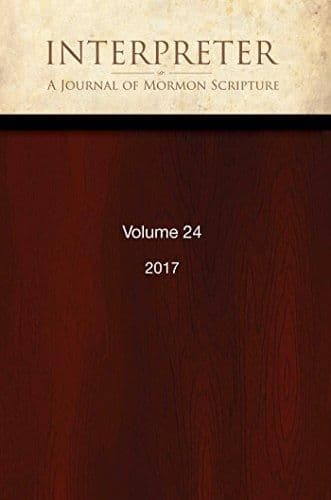Journal
First Visions and Last Sermons: Affirming Divine Sociality, Rejecting the Greater Apostasy

Title
First Visions and Last Sermons: Affirming Divine Sociality, Rejecting the Greater Apostasy
Publication Type
Journal Article
Year of Publication
2020
Authors
Larsen, Val (Primary)
Journal
Interpreter: A Journal of Latter-day Saint Faith and Scholarship
Pagination
37-84
Volume
36
Abstract
There is a kinship between Lehi and Joseph Smith. They are linked to each other by similar first visions, and they faced roughly the same theological problem. Resisted by elites who believe God is a Solitary Sovereign, both prophets affirm the pluralistic religion of Abraham, which features a sôd ’ĕlôhim (Council of Gods) in which the divine Father, Mother, and Son sit. These prophets are likewise linked by their last sermons: Lehi’s parting sermon/blessings of his sons and Joseph’s King Follett discourse. Along with the first visions and last sermons, the article closely reads Lehi’s dream, Nephi’s experience of Lehi’s dream, and parts of the Allegory of the Olive Tree, John’s Revelation, and Genesis, all of which touch on the theology of the Sôd (Council).
Subject Keywords
Bibliographic Citation
Terms of use
Items in the BMC Archive are made publicly available for non-commercial, private use. Inclusion within the BMC Archive does not imply endorsement. Items do not represent the official views of The Church of Jesus Christ of Latter-day Saints or of Book of Mormon Central.